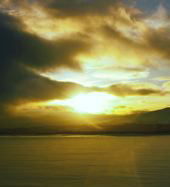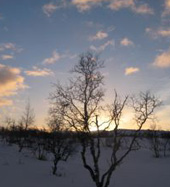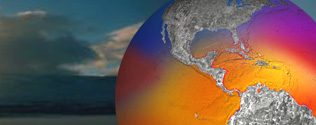



Climate change
The Arctic’s people, flora, and fauna, are the Miners’ Canaries for planet earth.
Evidence of climate change
Ice cores, and other evidence of climate conditions in the distant past, provide evidence that rising atmospheric carbon dioxide levels are associated with rising global temperatures. Human activities, primarily the burning of fossil fuels (coal, oil, and natural gas) and secondarily the clearing of land, have increased the concentration of carbon dioxide, methane, and other heat-trapping (“greenhouse”) gases in the atmosphere.
Since the start of the industrial revolution, the atmospheric carbon dioxide concentration has increased by about 35% and the global average temperature has risen by about 0.6º C.
There is an international scientific consensus that most of the warming observed over the last 50 years is attributable to human activities.
What will happen?
continuing to add carbon dioxide and other greenhouse gases to the atmosphere is projected to lead to significant and persistent changes in climate, including an increase in average global temperature of up to 5.8º C over the course of this century. Warming over the Arctic Ocean is projected to rise by 6-10º C by the 2090s. Climatic changes are projected to include shifts in atmospheric and oceanic circulation patterns, an accelerating rate of sea-level rise, and wider variations in precipitation. Together these changes are projected to lead to consequences that will affect all human life on the planet and in drastic ways. These effects will include impacts on coastal communities (many will disappear) animal and plant species (many will disappear), water resources (much will disappear) and human health and well-being (we too risk extinction).
Examples:
* Melting of highly reflective arctic snow and ice reveals darker land and ocean surfaces, increasing absorption of the sun’s heat and further warming the planet.
* Reductions in sea ice will drastically shrink marine habitat for polar bears, ice-inhabiting seals, and some seabirds, pushing certain species towards extinction.
* Reindeer and other land animals are likely to be increasingly stressed as climate change alters their access to food sources, breeding grounds, and migration routes.
* Along arctic coastlines thawing permafrost weakens lands adding to their vulnerability. Inland, existing buildings, roads, pipelines, airports, and industrial facilities will be destabilised.
* Many indigenous peoples dependant on hunting, reindeer herding, fishing and gathering will lose their food security, and also the basis for their cultures.
* Ultraviolet radiation (UV) due to damage to the stratospheric ozone layer will increase dosage in young people by about 30% which is known to cause skin cancer, cataracts, and immune system disorders.
What can we do?
science suggest that responding to this challenge will require two sets of actions:
1) called mitigation, to slow the speed and amount of future climate change, by reducing greenhouse gas emissions; and
2) called adaptation, to attempt to limit adverse impacts by becoming more resilient to the climate changes that will occur while society pursues the first set of actions.
Why should we act?
Although a very small percentage of the world’s greenhouse gas emissions occur in the Arctic, human-induced changes in arctic climate are among the largest on earth. As a consequence the changes already underway in arctic landscapes, communities, and unique features, provide an early indication for the rest of the world of the significance of global climate change. These climatic changes will reach far beyond the Arctic, affecting global climate, sea levels, biodiversity, and many aspects of human social and economic systems. Climate change in the Arctic thus deserves and requires urgent attention by both decision makers and the public world-wide.
When shall we act?
Now... and before it is too late.